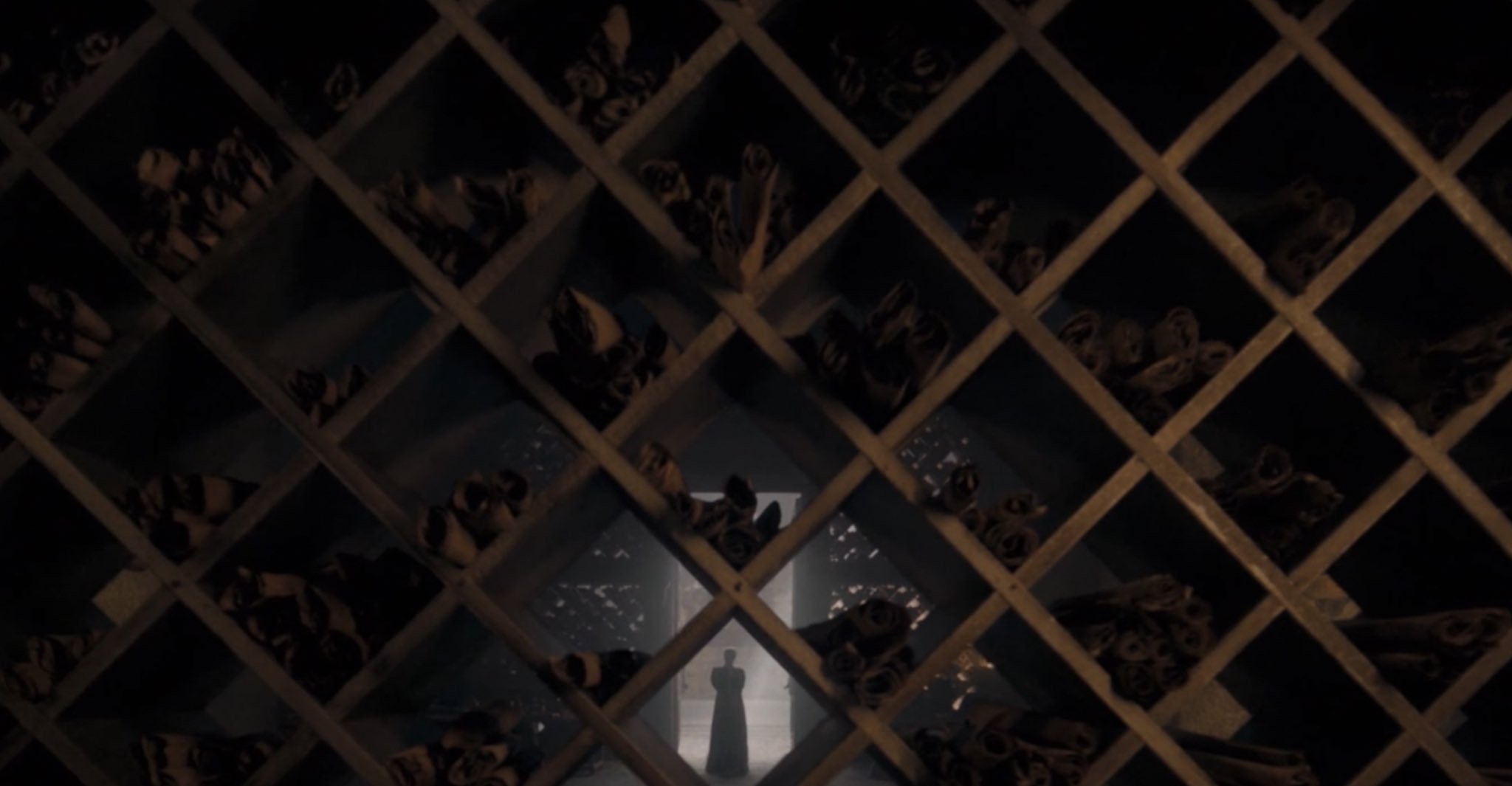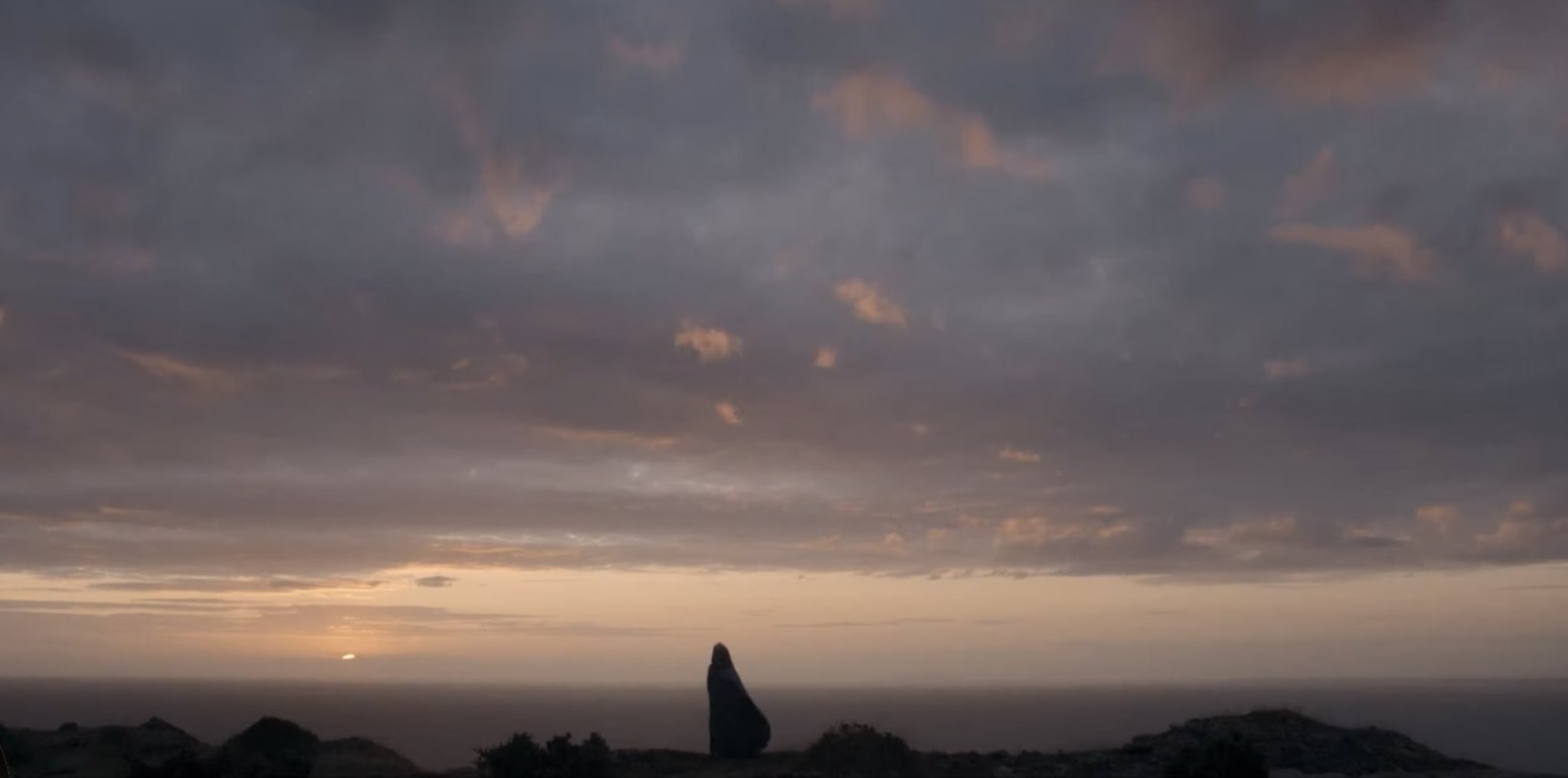The season 2 finale of HBO’s House of the Dragon did a cool thing. The show’s two main protagonists are Rhaenyra and Alicent. Season 1, they start as childhood best friends. So, of course, by the end, they’re at war with one another. Throughout season 2, they each question the war and their own actions. Rhaenyra comes to the realization of who she has to be. While Alicent realizes who she wants to be. They have a climatic conversation where they bury the hatchet in a way that is supposed to lead to Rhaenyra ascending to the throne and Alicent escaping the pressures of politics, leadership, and duty.
That last discussion is visually quite by-the-numbers. Medium close-ups. Reaction shots. Shot-reverse-shot. Why? Because neutral cinematography allows audiences to focus on the acting and dialogue, to really bask in the performances and not only see what the characters are feeling but vicariously feel it themselves.
Once the conversation ends, we get the final montage that positions various characters for the next season, giving hints and implications of what’s to come. All of that builds to the last two shots. Rhaenyra stands at the entrance to a library. In the foreground is a wall of scrolls. In the background, at the bottom of the frame, barely visible through the shelving—Rhaenyra. We cut from that to Alicent. Who is also at the bottom of the frame, same exact spot as Rhaenyra, except she’s outside, on the edge of a cliff overlooking the ocean, the sky glowing with the pinks and oranges of sunset.
A lesson in mise-en-scene
When you start learning about movies and how to watch movies, one thing that comes up a lot is cinematography and the idea of mise-en-scene. Mise-en-scene refers to everything that’s in the frame at a given moment. And usually in the context of intentionality.
What does that mean? Think about if you were on a walk in a park. It’s a lovely day so you take out your phone and record a video. You might focus on a dog chasing a ball. You choose to zoom in on the dog. Someone else might also decide to record a video but they have their back to the dog. Instead, they zoom out and pan across people on blankets, a yoga group, the volleyball courts, and come to rest on a single tree that’s taller than everything else around.
Each person made different, conscious decisions about what they wanted to show and what they decided to exclude. The zoom on the dog means you really wanted people to pay attention to the dog. While the other person didn’t zoom in on anything, which conveyed a broader visual and thus a broader message about simply being in a park and enjoying the different aspects of that microcosm.
The big thing with this example is that you did not put the dog there. You had no say over what the dog would do. Same with the other person. They had no control over whether those volleyball courts were full or empty. Or if the tree was there or not.
With movies, filmmakers do have that control. Over what’s there, how it looks, how it behaves, etc. Part of the idea of mise-en-scene is acknowledging that intentionality. For example. The Godfather opens in Don Corleone’s office. It’s not a room that had existed and the filmmakers happened to walk in and shoot the scene there without changing anything. Many people made specific choices. About the furniture. The layout. What’s on Vito’s desk. What photos he has on the mantle, if he even has photos on the mantle. Are the blinds opened? Closed? That’s not even mentioning the position of the characters. When the scene starts, Vito’s at his desk, sitting down, while three other people are on the other side of the desk. The scene ends with Vito standing, also on the other side of the desk.
Everything that happens, shot by shot, moment by moment, is a calculated choice. With Vito sitting, there’s a sense of calmness. Of relaxedness. Then the man talking to Vito, Bonasera, stands. Bonasera takes up more of the frame, is visually positioned above Don Corleone. But once the Don stands, he fills the frame. He’s much taller than Bonasera. And you suddenly have a sense of his presence and power, especially as he says the lines “Some day, and that day may never come, I’ll call upon you to do a service for me. But, uh, until that day, accept this justice as a gift on my daughter’s wedding day.”
The weight of the debt Bonasera owes to Vito comes through in the height difference, in Vito’s arm around Bonasera’s shoulder. They walk from part of the room that has a dull, orange light in the background to another part that’s completely pitch black. That change in lighting isn’t a coincidence. Francis Ford Coppola uses the lightning to reinforce the deal with the devil that Bonasera just made. It’s subtle but it’s there. And that visual choice adds to the subtext of the dialogue and performance and gives the scene artistic depth and power. Little details like that are why Godfather’s in the “best movies ever made” conversation.



Back to House of the Dragon
Knowing what you now know about mise-en-scene, what do you think when I show you these two shots from House of the Dragon?


Broadly, the biggest difference is the sense of space. Rhaenyra is confined. Alicent is in the open. Rhaenyra looks toward the camera. Alicent has turned away from us and faces something else. It’s the “which way they’re facing” that I think is the coolest thing. Because we know Rhaenyra is prepared to be queen and carry all the burden and history and expectation that comes with that position. She faces the scrolls but she also faces the viewer. She’s responsible to the past, the present, and the future yet to be written. And she cares about what people think of her. What her father would think, what her ancestors would think, what the people of Westeros think, and what the next generations will say about her. She faces us and we represent the gaze of the entire world.
Whereas Alicent doesn’t care anymore. She says how she just wants to go off with her daughter and granddaughter and live her life on her terms. So her back is to the camera, to the viewer, because we’re not something that concerns her. It’s the world ahead of her and the potential it holds. The sun sets on the life she had known. And will dawn on a new one.
Generally speaking, television isn’t known for employing advanced mise-en-scene techniques the way artsier films do. Shots in House of the Dragon usually do one of three things: remain simple to showcase the acting; highlight important, consequential information (like in S2E2 when Aegon hangs all of the Keep’s ratcatchers); convey aesthetic beauty and/or emotion. All of that is fine! It’s just not as nuanced as what happens moment to moment in The Godfather. Don’t get me wrong, most movies aren’t as nuanced as The Godfather. But those last two shots at the end of HOTD S2 feel much more like cinema and that’s because they employed a more advanced use of mise-en-scene.

Business dicker I appreciate you sharing this blog post. Thanks Again. Cool.